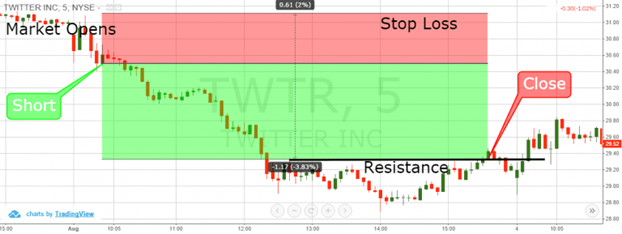Money management is one of the most important concepts of trading. In this section, we will explain in detail what money management is, why you should employ risk management techniques, and how you can mitigate risk using money management strategies.
Table of Contents:
WHAT IS MONEY MANAGEMENT?
Money management refers to keeping downside risk on each of your trades at manageable levels so as to preserve your capital. Money management is based on the idea that protecting your capital should be your first goal and that every trade you open should be based on money management principles.
RISK AND MONEY MANAGEMENT IN TRADING
Failure to employ risk management principles is one of the main reasons why most traders remain unprofitable in trading. Some traders rely on exotic trading setups and trading strategies that might work in some cases, but without risk management measures, they won’t produce the desired results in the long run.
WHY SHOULD YOU EMPLOY RISK MANAGEMENT TECHNIQUES IN YOUR TRADING?
Money management detaches you from your trades, which means that you are not worried about the outcome of your trade as it relies solely on your trading system and risk management techniques.
When using risk mitigation techniques, stop-loss is triggered automatically. So, you don’t have to cling to your losing trades, hoping against the hope that they will recover their losses, only to see them go deeper into losses.
HOW CAN RISK BE MITIGATED USING RISK MANAGEMENT TECHNIQUES?
Let’s discuss some common but effective risk management techniques you can implement in your trading:
Choose Stop-loss and Take-Profit points
You should plan your stop-los and take-profit points for each trade even before placing a buy or sell order. When you set take-profit and stop-loss points upfront, you take emotions out of the equation, eliminate the need for trade management, and reduce stress.
A stop-loss ensures that losses are minimized while striving to generate disproportionate profits.
Here’s an example of what it might look like in a winning short position:

Never risk more than 1% of your account on a trade
Experienced traders never risk more than 1% of their account balance on a single trade. For example, if your account balance is $5,000, you can open a trade worth $5,000 – or more if you use leverage – but risk only 1% of your balance ($5,000 x 1% = $50) or $50 on each trade.
This would ensure that you stay in the market for the long term and don’t blow up your account quickly in just a few trades. We discuss this technique and the Kelly criteria in more depth in our SimCast interview with Kris Verma.
Determine the optimal position size
Optimal trading size means opening a trading position that matches the risk level and stop-loss point.
For example, if you have determined that you can only risk 1% of $5,000 ($50) on a particular exchange, you can buy 100 stocks worth $50 each with a stop-loss point of $0.50. Alternatively, you can consider buying 50 shares worth $100 each with a stop loss point of $1.
A higher account balance gives you more leeway in setting stop-loss points and position size. Even if you use leverage, you should still keep the risk up to 1% of your account balance on each trade.
Make trades with high risk-reward ratios
Even the best risk management strategy cannot protect your capital if the risk-reward ratio of your trades is not favorable. The risk-reward ratio determines the amount of money you want to generate for every dollar you risk on a trade.
For example, if you’re risking $50 or 1% of your $5,000 account, you should aim to earn at least $150 or 3% of your account balance. Experienced traders recommend taking high-probability trades with a risk-reward ratio of at least 1:3. A risk-reward ratio of 1:3 means you earn $3 for every dollar you risk.
With a risk-reward ratio of 1:3, you can be profitable or in good position even if you have one winning trade after every two losing trades because you earn up to three times on your winning trades compared to your losing trades.


